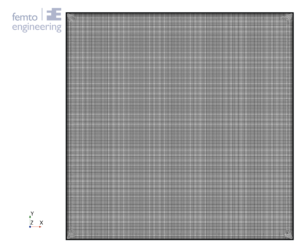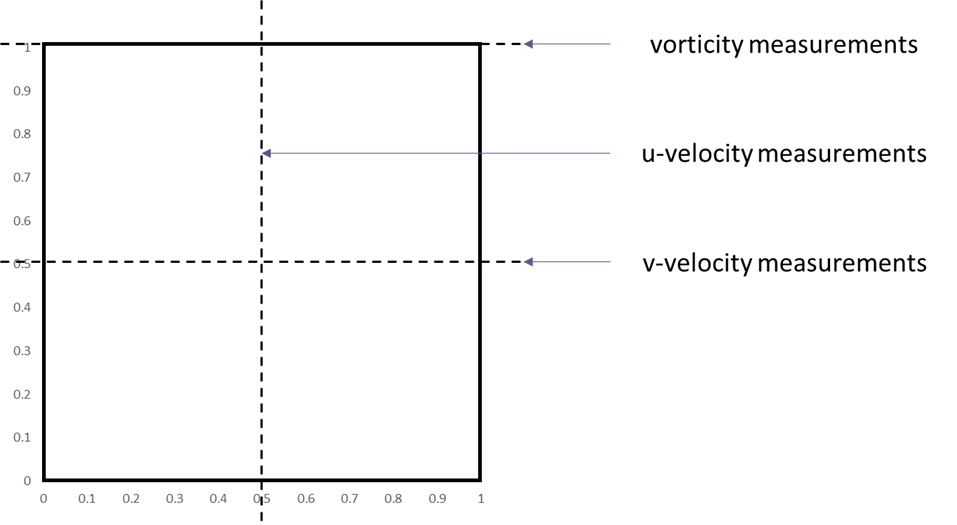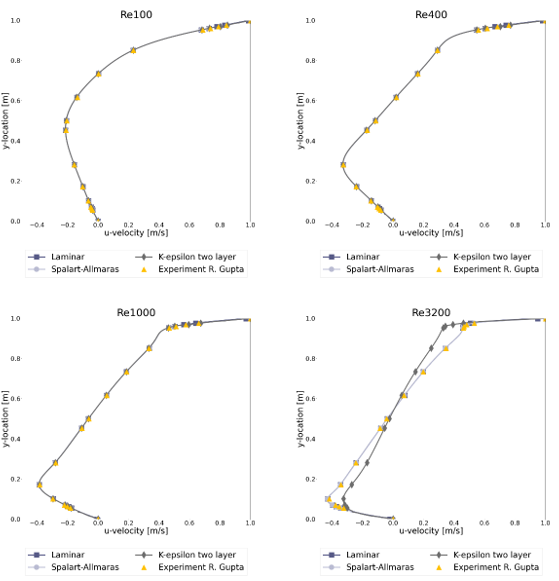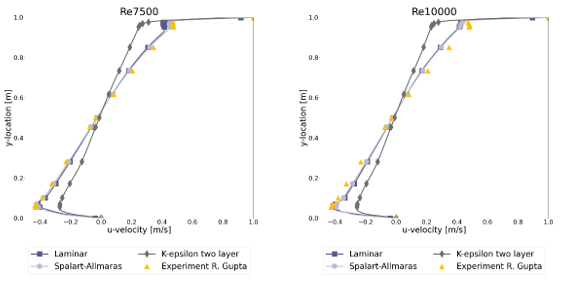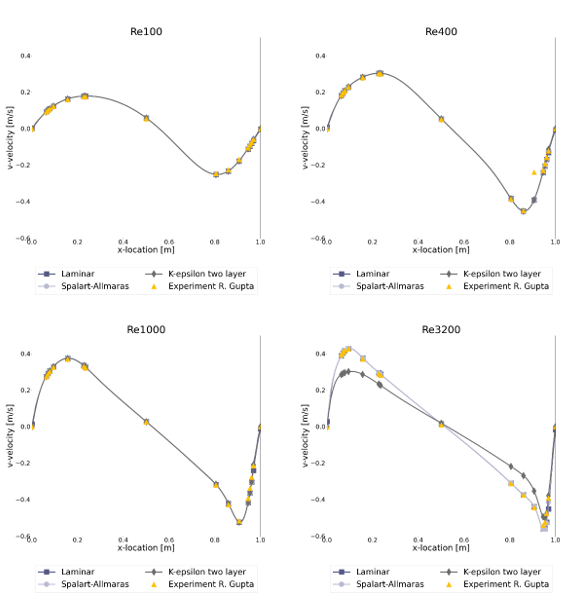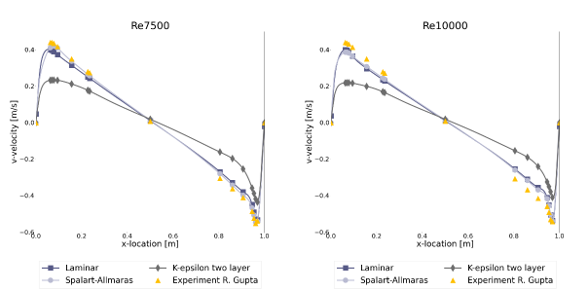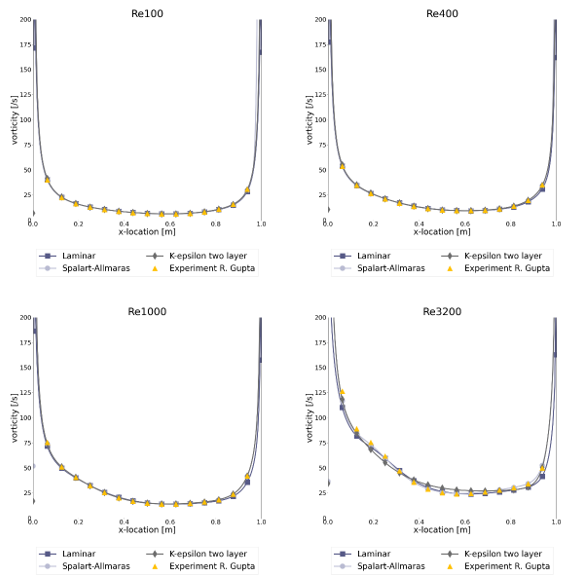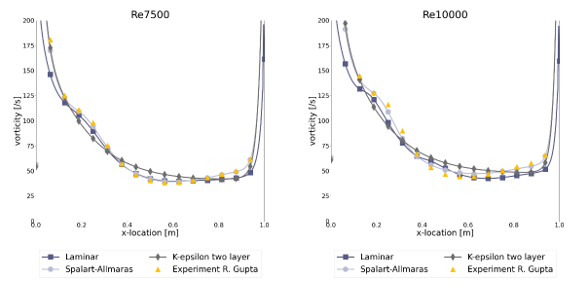To compare the results the r-squared fit, Table 1, the maximum percentual error, Table 2, and the maximum absolute error, Table 3, have been determined for each of the Reynolds numbers and turbulence models. Furthermore, the figures show the comparison between the simulation and experimental results, with the u-velocity in Figure 1, the v-velocity in Figure 2 and the vorticity in Figure 3. Figure 4 till Figure 9 show the vorticity lines within the cavity for both the measurements and the simulation.
The results show a good fit for all simulations up to a Reynolds number of at least 1000. Beyond this number the flow transitions from a laminar to a turbulent regime, which decreases the fit due to 3D effects not taken into account into a 2D simulation. In general, the higher the Reynolds number the larger the difference between the experimental results and the simulations results.
For the u-velocity over the vertical mid-line of the cavity, the v-velocity over the horizontal mid-line and the vorticity the Spalart-Allmaras turbulence model is shown to have a good match up to the highest Reynolds number, with an error of 12.3%, 12.1% and 8.3% respectively at Re=10 000.
In general, the k-ε two-layer model performs the worst with an error of 51.9%, 50.4% and 18.7% for the u-velocity, v-velocity and vorticity at Re = 10 000.



